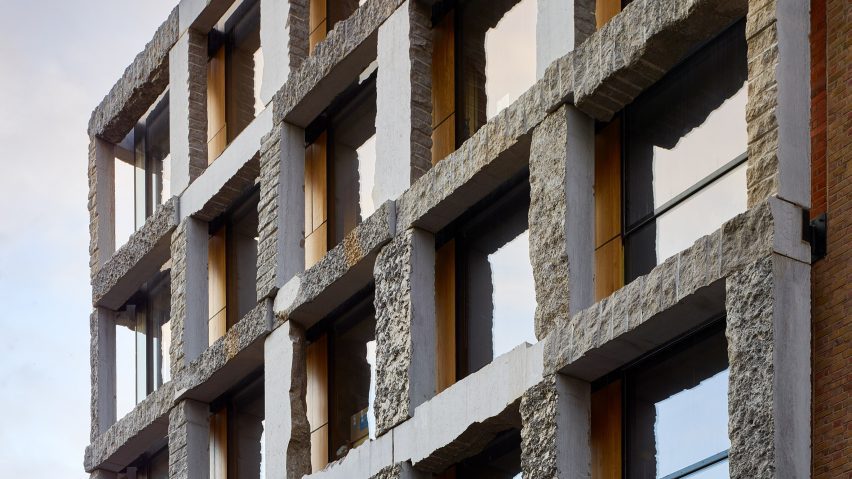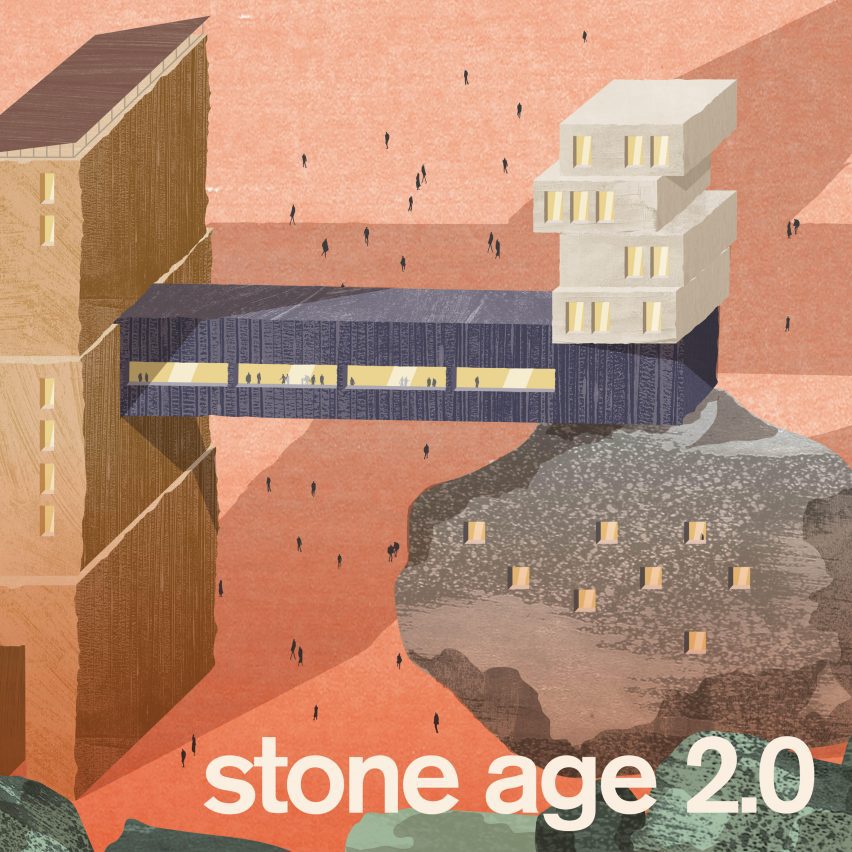
"Stone makes sense, but it is not a silver bullet"
The built environment must hark back to its low-carbon past and embrace stone as a structural material if it is to effectively tackle its environmental footprint, writes Steve Webb as part of our Stone Age 2.0 series.
When we look back, ignoring stone will seem like a great missed opportunity. Why did we persist with our high-carbon fossil-fuel building habit when we were surrounded by mountains of ready-made and viable construction material?
We all know we need to reduce construction's carbon impact and to do that we need to wean ourselves off of fossil fuels. The debate over how this can be achieved is wide and confusing and infused with many vested interests. However, building nuclear and renewable power plants while doing nothing to abate the impact of brick, concrete and steel is like having a leaking boat and, instead of plugging the leak, just buying a bigger pump.
The fossil fuel era is a short, 200-year blip in thousands of years of building history. The energy we use to build a single building today is greatly exaggerated compared to any era before. We are so deeply steeped in fossil fuel that we are completely blind to the fact that most of the building materials we use are not only very high energy, and therefore carbon intensive, but often based on coal – a dirty polluting fuel we imagined was on the decline.
To reverse our recent habits, we need to learn from our low-carbon past, while not returning to it. Can we imagine how building technology might have developed from the pre-fossil fuel era to today in the absence of fossil fuels?
Stone can be 15 times less carbon intensive than steel
Stone hails from this low-carbon era but has been largely forgotten by the construction industry in all but cladding and decoration. The material is well-placed for a comeback as its basic attributes compare well against industrial materials.
Stone is non-combustible, incredibly durable and so abundant as to be effectively inexhaustible. Many stones have compressive strengths as high as 200 Newtons per millimetre square, while concrete typically has a strength of 40 Newtons per millimetre square. Granites can be almost double the stiffness of concrete as concrete shrinks and creeps as it dries.
Perhaps most importantly in our current context, stone has a carbon per kilogram of approximately 2.5 times less than concrete. When combined with its superior strength, stone can be 15 times less carbon intensive than steel and 10 times less carbon intensive than concrete. Perhaps surprisingly, stone has even less carbon than timber – when you ignore sequestration, which is itself pretty contentious.
However, carbon isn't the only environmental impact. What about quarrying I hear you ask? While quarrying is impactful, it can be electrified with low levels of power and it can be non-polluting and create only inert waste. Quarries can be left as nature reserves or backfilled with waste. And, when all is said and done, all current building materials are quarried anyway.
While the in-built qualities of stone remain the same as they have for millennia, in the past, stone was used in compression structures, but vaults and flying buttresses are not very practical or space-efficient.
For the 21st century, we need to bring stone up to date – capturing all its goodness, while making it practical for modern constructions. One sensible way to unfetter stone from its gothic past is by reinforcing it as concrete is reinforced.
Stone can be easily drilled and threaded with steel rods making it into beams. The rods can be tensioned using jacks holding the stones together. Stone beams and slabs can be similar in size to steel and concrete ones and achieve similar spans.
This is what we have been working on including our prototype stone beam made for the Building Centre's New Stone Age exhibition in collaboration with the Stone Masonry Company and architecture studio Groupwork. The beam spanned 12 metres and was designed to carry a full office design load.
The beams are 400 millimetres deep and the slabs are 75 millimetres. The system can achieve one-hour fire performance and the unit can be prefabricated and craned into place. Any kind of beam or frame can be made in this way. A further example is the equanimity stone beam exhibited at the Royal Academy Summer Exhibition in 2022, where a 5.5-metre cantilever beam was formed with Portland stone and recycled granite cladding.
Architectural language should reflect local conditions
The capital investment required to make a switch away from steel or concrete to stone is very little. We have ample stone in the UK. Beam factories like the Stone Masonry Company require little plant and investment and could be set up alongside quarries supplying beams and slabs to order.
Stone makes sense, but is not a silver bullet and should not be thought of in isolation. According to architect Carles Oliver, a return to stone reflects the idea that architectural language should reflect local conditions. In Britain, we are slowly adopting imported mass timber as a low-carbon alternative to mainstream materials without asking whether this creates a natural architectural language for the UK. What would be a language for us?
The UK has limited supplies of local timber, but also has some stone. We have been examining hybrid combinations of timber joists and stone. A private home we worked on in Primrose Hill with Nagan Johnson was an early test of this idea. It has post-tensioned stone beams in combination with timber joists and thin stone slabs. This system, not quite timber and not quite stone, not quite north and not quite south, is less combustible than mass timber and provides just about enough thermal mass to cool spaces in Britain's not-quite-hot summers.
In this system, the long spans were achieved with post-tensioned stone beams where the floor decks in between are formed with hybrid timber and stone composites. Here, the stone acts in compression on top of the floor while the timber takes the tension below it.
Although a modest first step, this system has wide applicability for both housing and commercial uses. Imagine high-rise reinforced stone frames with hybrid timers and stone floors. Not only low carbon but an elegant exposed natural material palette.
Designers need to grow a far more visceral awareness
The government could lead by providing subsidies for research, codification in the form of a structural stone Eurocode and building regulations and stone supply standards.
The private sector also has a role to play but also a commercial opportunity. As recognition of the embodied carbon issue rises amongst investors and, therefore, funders seek ethical investments, and carbon tax starts to increase the cost of high-energy alternatives, there is a huge opportunity for companies to develop products and services using stone or stone and timber hybrids.
Designers need to grow a far more visceral awareness of the energy in high-carbon building materials and push to use less of them in favour of a lower-carbon palette. If these things happen we could get to the point where building is extremely low-carbon and even, if we believe in sequestration, carbon negative and a force for good once again.
Steve Webb is a structural engineer and co-founder of Webb Yates, which he established with Andy Yates in 2005. Webb specialises in non-conventional materials, such as stone, and how they can be used to create low-carbon and environmentally friendly structures.
The photo of 15 Clerkenwell Close, for which Webb Yates served as structural engineer, is by Timothy Soar.

Stone Age 2.0
This article is part of Dezeen's Stone Age 2.0 series, which explores the potential of stone to be a viable, low-carbon, modern structural material.